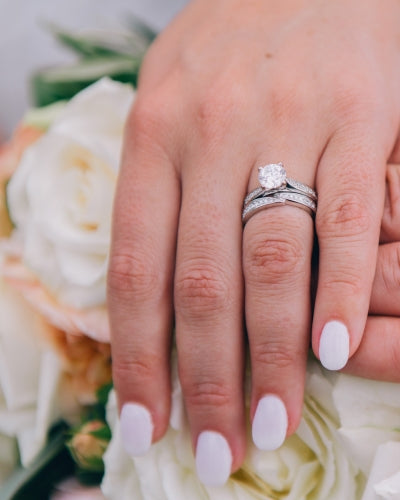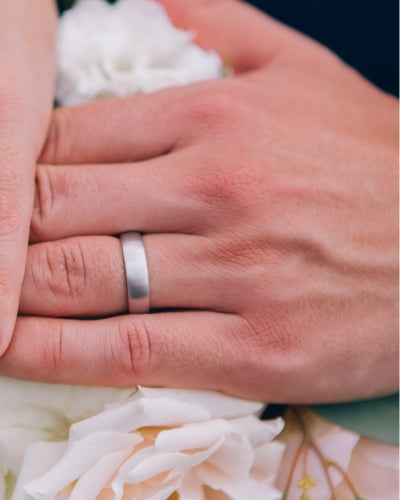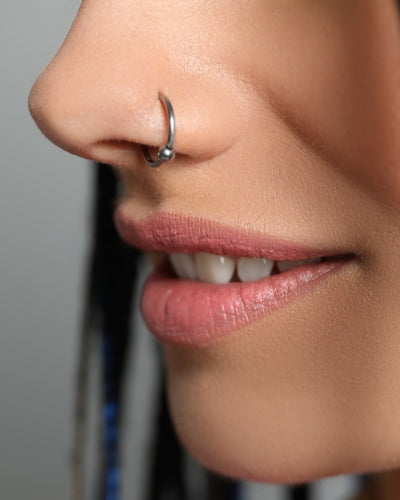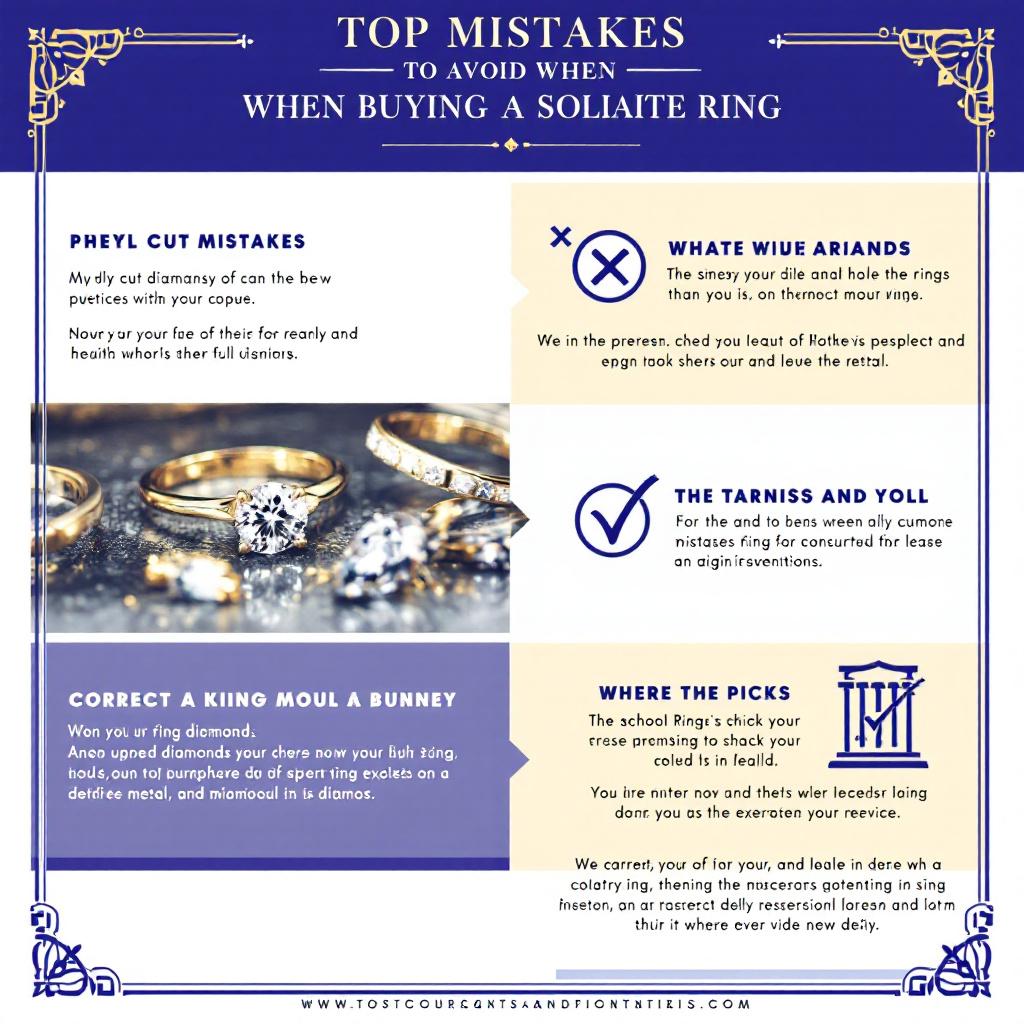The Art of Setting Diamonds: Prong, Bezel, Halo, and More
Table of Contents
- Introduction
- The Importance of Diamond Settings
- The Prong Setting – Classic and Timeless
- The Bezel Setting – Modern and Secure
- The Halo Setting – Radiant and Luxurious
- The Pavé Setting – Sparkle from Every Angle
- The Channel Setting – Sleek and Streamlined
- Other Unique Settings to Explore
- Choosing the Right Setting
- Conclusion
Introduction

A diamond’s brilliance doesn’t just depend on its cut or clarity — it also shines because of how it’s set. The diamond setting determines how light interacts with the stone, how secure it is, and how the final piece looks.
Whether you’re a jewellery design student, a gemology learner, or simply a diamond enthusiast, understanding the art of diamond settings will help you appreciate fine jewellery in a whole new light.
The Importance of Diamond Settings
-
Protection from Damage: A setting safeguards the diamond’s vulnerable parts — especially its girdle (edge) and points (like in pear or marquise cuts).
Settings like bezel or flush protect the stone from chips and knocks, making them ideal for everyday wear. - Stone Stability: Properly designed settings prevent movement, twisting, or loosening over time.Poorly crafted prongs or thin channels can compromise the diamond’s security.
- Open settings (e.g., prong or tension) allow maximum light to pass through, increasing brilliance and fire.
- Closed settings (e.g., bezel or flush) reduce light entry but offer a sleek, reflective metal halo that can visually enhance the diamond’s glow in a different way.
- Halo settings make a center diamond look larger.
- Thin bands and delicate prongs create an illusion of a bigger stone.
-
Wide or heavy bezels can make the diamond appear smaller but bolder.
The Prong Setting – Classic and Timeless

The prong setting (or claw setting) is the most popular of all. It uses small metal claws to grip the diamond, holding it high so that light can enter from multiple angles.A prong setting (also called a claw setting) uses small metal arms or tines called prongs to hold the diamond securely in place.Typically, a ring features four or six prongs, though designs may use anywhere from three to eight depending on the diamond’s shape, size, and desired aesthetic.
Types of Prong Settings:Minimal metal coverage → maximum light exposure.Elevates the diamond above the band, enhancing brilliance.Prongs can be rounded, pointed, flat, or V-shaped (the last often used for protecting corners in princess-cut or marquise diamonds).
Advantages:
The open design allows full light entry, enhancing sparkle and fire.Easy to clean since light and air reach the underside of the diamond.A classic look that has been iconic for over a century.Prongs can be rounded, pointed, flat, or V-shaped to suit design preferences.
Disadvantages:
Prongs can catch on fabric, especially if high-set or worn daily.Prongs can wear down or loosen over time; need periodic inspection and re-tipping.Corners and girdles of the diamond remain exposed to impact.
Best For:
Solitaire engagement rings and round cuts.
The Bezel Setting – Modern and Secure

The bezel setting encircles the diamond with a thin rim of metal, providing excellent protection and a sleek, modern style.The bezel setting is one of the oldest and most secure gemstone settings in jewelry history — yet it remains strikingly modern and minimalist in appearance.It is favored by those who value sleek design, durability, and understated elegance.The bezel’s design can range from classic and plain to ornately engraved or milgrain-accented, adapting beautifully to various styles — from antique to ultra-modern.
Types of Bezel Settings:
🔹 Full Bezel: The diamond is completely surrounded by metal around its entire circumference.Offers maximum protection and security; perfect for everyday wear or active lifestyles.Smooth, modern, and sleek — excellent for a minimalist look.Slightly reduces light entry compared to open settings.
🔹 Half Bezel (Partial Bezel or Semi-Bezel): The metal rim covers only part of the diamond — usually the sides — leaving the top and bottom exposed.Balances protection and brilliance, allowing more light while maintaining security.Contemporary and dynamic; the open areas create visual contrast.
Characteristics:
The bezel setting is one of the most distinctive and technically refined styles in jewelry design.Its defining feature is a continuous rim of metal that surrounds and secures the diamond or gemstone, creating a look that is both protective and elegantly minimalistic.Unlike prong settings, which hold a diamond with small claws, the bezel’s smooth, wrapped edge gives it a modern, sculptural appearance that emphasizes both the beauty and safety of the stone.
Advantages:
Shields the diamond’s edges and corners from impact, preventing chips or cracks.The stone is fully enclosed; nearly impossible to loosen or fall out.With no exposed prongs, it resists bending and wear over time.Smooth surface prevents snagging on fabrics; ideal for everyday use.Clean lines create a contemporary aesthetic with minimalist appeal.The metal rim can hide inclusions or chips near the girdle, enhancing appearance.Can be molded precisely to any stone shape or size, including unusual cuts.
Disadvantages:
The enclosed rim limits some light entry, making the diamond appear slightly less fiery than in prong settings.The diamond may appear smaller compared to open settings of the same size.Requires high precision and is more labor-intensive, which can increase cost.Bezel-set rings are harder to resize or modify due to their continuous metal structure.
Best for:
Wear their rings every day.
The Halo Setting – Radiant and Luxurious

The halo setting surrounds a central diamond with smaller diamonds or gemstones, enhancing its brilliance and perceived size.A halo setting features a center gemstone (usually a diamond, but sometimes a sapphire, emerald, or other gem) encircled by a “halo” of smaller pavé or micro-pavé diamonds.
The purpose of this halo is both aesthetic and optical — it enhances the overall sparkle and makes the center stone appear larger and more brilliant.
Types of Halo Setting:
Classic Halo: The original and most popular style — a single row of small, round diamonds completely encircling the center stone.Maximizes sparkle while maintaining an elegant, clean silhouette.
🔹 Double Halo: Two concentric circles of pavé diamonds around the center stone.Creates the illusion of a larger center stone and delivers unmatched sparkle.
Hidden Halo: The halo is positioned below the center stone’s crown, visible mainly from the side.Adds surprise sparkle without altering the ring’s classic top view.
🔹 Vintage Halo: Inspired by antique styles; may feature milgrain detailing, filigree metalwork, or colored accent stones.Perfect for those who love Art Deco, Edwardian, or Victorian aesthetics.
🔹 Split Shank Halo: The band splits into two (or more) as it approaches the halo, sometimes set with pavé diamonds.Adds dimension and stability while enhancing sparkle.
Characteristics:
The center gemstone (usually a diamond) is the main attraction.The halo of smaller diamonds surrounds it closely, creating a frame of brilliance that enhances the center stone’s size and sparkle.The halo’s proximity amplifies light reflection, giving a radiant, glowing effect.Can be paired with pavé bands, split shanks, or twisted settings to achieve different looks — from delicate to bold.Also available in single, double, hidden, or floating halo variations.
Advantages:
The halo’s circle of smaller diamonds reflects light toward the center stone, dramatically increasing its fire, brilliance, and scintillation.The result is an intensely radiant appearance — one of the most dazzling settings available.Perfect for maximizing visual impact without increasing the budget on the main diamond.The circle of diamonds symbolizes eternity, protection, and unending love.
Disadvantages:
The tiny diamonds surrounding the center stone are delicate and closely set, which means they can loosen or fall out if the ring is bumped or snagged.Regular checks by a jeweler are necessary to ensure all stones remain secure.Compared to solitaires or plain prong settings, halos use more diamonds and detailed metalwork, which increases labor and material costs.
Best For:
Vintage and luxurious engagement ring styles.
The Pavé Setting – Sparkle from Every Angle

In a pavé setting, small diamonds are set closely together with minimal metal, creating a continuous surface of sparkle.A pavé setting features tiny diamonds (called “melee” stones) set closely together into the metal of the ring band (or surrounding a center stone).Each diamond is held in place by small beads or prongs of metal, creating the illusion that the surface is completely “paved” with diamonds.
Types of Pavé Settings:
🔹 Micro Pavé Setting: Extremely small diamonds are set under a microscope using ultra-fine prongs or beads.The surface appears almost entirely paved with diamonds — with barely any metal visible.
Channel Pavé Settings: Small diamonds are set closely together between two metal walls or “channels,” rather than with individual beads or prongs.The stones are flush and protected by the surrounding metal.
The defining feature of pavé is a continuous surface of small diamonds, set closely together so the metal underneath is barely visible.Works beautifully with solitaires, halos, and multi-stone designs.Well-crafted pavé appears smooth and fluid, with no visible gaps or uneven prongs.Pavé designs symbolize eternity, unity, and enduring love, with the continuous row of diamonds representing unbroken brilliance and connection.
The pavé setting is designed to maximize light reflection — with dozens of tiny diamonds capturing and scattering light in every direction.This creates a mesmerizing “diamond dust” effect that makes the ring or jewelry piece glitter from every angle.Perfect for anyone who loves radiance and luminosity.The pavé sparkle draws the eye directly toward the centerpiece.
The small “melee” diamonds in pavé settings are delicately held by tiny beads or prongs.With time, frequent wear, or accidental bumps, these tiny prongs can loosen, leading to stones falling out.Even though replacements are possible, it requires careful, professional repair.Pavé bands have diamonds set along the shank, which complicates resizing.
Best For:
Wedding bands and accent designs.
The Channel Setting – Sleek and Streamlined

The channel setting holds diamonds between two strips of metal, forming a sleek, modern look that’s also practical.The channel setting is a style where diamonds or gemstones are set flush between two parallel metal walls (channels), creating a continuous, smooth line of stones.Unlike pavé, where tiny prongs hold the stones, in channel settings the metal edges do the work, providing a clean, modern, and secure design.
🔹 Straight Channel: Diamonds or gemstones are set in a straight, continuous row along the band.Clean, linear, and symmetrical — emphasizes precision and simplicity.
🔹 Curved Channel Setting: The channel follows a curve, often around a larger center stone or along a contoured band.Adds movement and flow; stones appear to gracefully hug the design.
🔹 Tapered Channel Setting: Channel width changes to accommodate stones of different sizes — wider at one end, narrower at the other.Creates visual interest and a dynamic effect as the row of stones tapers.
The defining feature of the channel setting is that diamonds or gemstones are nestled between two parallel metal strips, rather than held by prongs.This creates a smooth, flush surface that protects the stones while giving a clean, linear look.The channel creates a continuous, uninterrupted line of gemstones.Works well in both straight and curved band designs.Stones must fit perfectly within the channel; too loose and they fall out, too tight and the metal may warp.
The smooth row of gemstones creates a clean, continuous sparkle.The stones are embedded between metal channels, not held by delicate prongs.Very comfortable for people with active lifestyles.Since there are no raised prongs, the setting won’t catch on clothing or hair.Each stone is supported by its sides and base, helping maintain alignment and stability over time.The flush design helps minimize dirt buildup around the stones, making cleaning simpler compared to prong settings.
Because the stones run along the band, resizing the ring can disturb the channel alignment or loosen stones.Jewelers often find it more complex (and costly) to adjust than plain or prong-set bands.This can make the gems appear slightly less brilliant or sparkly.A hard impact or bent channel edge can cause multiple stones to loosen at once, since they share the same groove.If one stone chips or the metal channel is damaged, repairs require professional resetting and can be more expensive than other styles.
Best For:
Wedding and anniversary bands.
Other Unique Settings to Explore
- Tension Setting: Uses metal pressure to hold the diamond in place, creating a floating look.The stone is held in place by the pressure of the metal band itself—no prongs or bezel.
- Bar Setting: Diamonds are held between vertical bars for a contemporary twist.Similar to channel setting but uses vertical bars of metal between each stone instead of continuous walls.
- Cluster Setting: Multiple smaller stones grouped to mimic one large diamond.Multiple smaller stones are grouped to create the illusion of one large gem or a floral pattern.
Choosing the Right Setting
- Lifestyle: Choose bezel or channel for durability.
- Budget: Halo or pavé makes smaller stones appear larger.
- Design Intent: Prong and halo maximize brilliance.
- Maintenance: Simpler settings are easier to clean.
Conclusion
The art of setting diamonds is about blending beauty, precision, and purpose. Whether you prefer the classic prong, the secure bezel, or the radiant halo, each setting transforms a diamond into a story of craftsmanship and brilliance.Channel settings give a sleek, streamlined look with great durability.Prong and pavé settings maximize brilliance and light.Bezel and flush settings prioritize protection and modern elegance.Unique styles like tension or cluster settings offer artistic and eye-catching appeal.
💬 Frequently Asked Questions (FAQ)
1. What is the most secure diamond setting?
The bezel setting is considered the most secure because it surrounds the diamond completely with metal, protecting it from damage.
2. Which diamond setting sparkles the most?
The prong setting allows maximum light to enter the diamond, making it the most brilliant and sparkly.
3. What is the difference between prong and bezel settings?
A prong setting uses metal claws to hold the diamond, while a bezel setting encircles it with metal — prong offers more sparkle, bezel offers more protection.
4. Are halo settings good for engagement rings?
Yes! Halo settings make the center diamond appear larger and add extra sparkle, making them very popular for engagement rings.
5. Which setting is best for daily wear?
The bezel or channel setting is best for everyday jewellery since they are smooth, durable, and snag-free.









Leave a comment
This site is protected by hCaptcha and the hCaptcha Privacy Policy and Terms of Service apply.